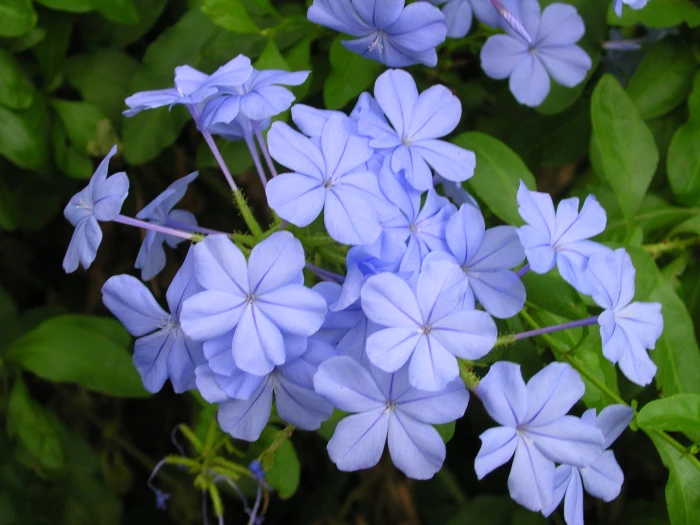Cape Leadwort
(Plumbago auriculata)
Cape Leadwort (Plumbago auriculata)
/
/

brewbooks from near Seattle, USA
CC BY-SA 2.0
Image By:
brewbooks from near Seattle, USA
Recorded By:
Copyright:
CC BY-SA 2.0
Copyright Notice:
Photo by: brewbooks from near Seattle, USA | License Type: CC BY-SA 2.0 | License URL: https://creativecommons.org/licenses/by-sa/2.0 | Uploader: Matanya | Publisher: Wikimedia Commons | Title: Flickr_-_brewbooks_-_Plumbago_auriculata.jpg | Notes: |












































































Estimated Native Range
Climate Requirements
| • Precipitation | 0" - 187" |
| • High Temp. | 56°F - 107°F |
| • Low Temp. | 14°F - 74°F |
Summary
Plumbago auriculata, commonly known as Cape Leadwort, is an evergreen perennial shrub, herb, or vine native to South Africa’s scrublands and savannas. In its natural habitat, it thrives in well-drained soils and is adapted to a warm, sunny climate. It can rapidly ascend to 6 m (20 ft) tall by 3 m (10 ft) wide in nature, but it is typically smaller in cultivation, especially when grown as a houseplant. The plant features phlox-like flowers that are pale blue, blue, or violet, about 2 cm wide, and bloom mostly in the summer, although it can flower year-round under ideal conditions. The flowers are showy and attract butterflies and other pollinators.
Cape Leadwort is valued for its continuous flowering and ease of maintenance. It is used in temperate regions as a ground cover or climbing plant in frost-free areas, or as a potted plant under glass where winters are cold. It has received the Royal Horticultural Society’s Award of Garden Merit for its ornamental qualities. The plant requires well-aerated, preferably acidic soil, and benefits from regular watering and medium drainage. It can be propagated both sexually by seeds and asexually by cuttings in summer. Potential problems include mealybugs and fungal diseases in overly moist conditions.CC BY-SA 4.0
Cape Leadwort is valued for its continuous flowering and ease of maintenance. It is used in temperate regions as a ground cover or climbing plant in frost-free areas, or as a potted plant under glass where winters are cold. It has received the Royal Horticultural Society’s Award of Garden Merit for its ornamental qualities. The plant requires well-aerated, preferably acidic soil, and benefits from regular watering and medium drainage. It can be propagated both sexually by seeds and asexually by cuttings in summer. Potential problems include mealybugs and fungal diseases in overly moist conditions.CC BY-SA 4.0
Plant Description
- Plant Type: Herb, Vine, Shrub
- Height: 1-3 feet
- Width: 1-3 feet
- Growth Rate: Moderate
- Flower Color: Blue, White
- Flowering Season: Spring, Summer, Fall
- Leaf Retention: Evergreen
Growth Requirements
- Sun: Full Sun, Part Shade
- Water: Medium
- Drainage: Medium
Common Uses
Bank Stabilization, Bee Garden, Bird Garden, Border Plant, Butterfly Garden, Deer Resistant, Drought Tolerant, Erosion Control, Fire Resistant, Hummingbird Garden, Potted Plant, Rabbit Resistant, Rock Garden, Salt Tolerant, Showy Flowers, Street Planting
Natural Habitat
South Africa’s scrublands and savannas
Other Names
Common Names: Cape Plumbago, Blue Plumbago, Blister Leaf, Azulina, Malacara, Celestina, Jasmín Azul, Blyblomma, Embeleso, Isabel Segunda
Scientific Names: Plumbago auriculata, Plumbago capensis, Plumbago alba, Plumbago auriculata f. auriculata, Plumbago auriculata f. alba, Plumbagidium auriculatum, Plumbago grandiflora
GBIF Accepted Name: Plumbago auriculata Lam.